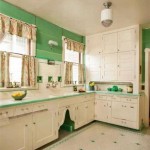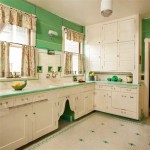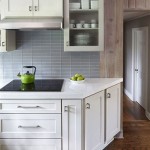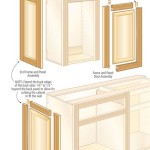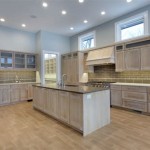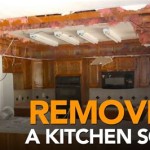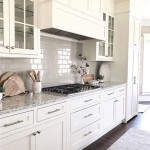1950s Metal Kitchen Cabinets: A Retro Revival
The 1950s marked a significant shift in kitchen design, embracing modern conveniences and vibrant aesthetics. Central to this transformation were metal kitchen cabinets, which offered a sleek, durable, and easy-to-clean alternative to traditional wooden cabinetry. These cabinets became synonymous with the era's optimistic, futuristic outlook, representing a break from the past and an embrace of new technologies.
Several factors contributed to the popularity of metal kitchen cabinets during this period. Post-war prosperity fueled a housing boom and a surge in consumer spending. Manufacturers capitalized on this by mass-producing affordable, readily available steel cabinets. Furthermore, advancements in manufacturing techniques allowed for greater design flexibility and the incorporation of innovative features.
The hallmark of 1950s metal kitchen cabinets was their streamlined design. Recessed handles, simple lines, and flat panel doors created a clean, uncluttered look. This minimalist aesthetic reflected the broader design trends of the era, emphasizing functionality and efficiency. The cabinets typically featured built-in storage solutions, such as spice racks, bread boxes, and sliding cutting boards, further enhancing their practicality.
Color played a crucial role in establishing the distinctive look of 1950s kitchens. Metal cabinets provided the perfect canvas for bold, vibrant hues, reflecting the era's playful spirit. Pastel shades like turquoise, pink, and yellow were particularly popular, often paired with contrasting countertops and flooring. These cheerful color palettes contributed to the optimistic and welcoming atmosphere that characterized 1950s kitchen design.
Durability constituted a key advantage of metal kitchen cabinets. Steel construction made them resistant to moisture, pests, and warping, offering a long-lasting and low-maintenance solution for busy households. This resilience made them particularly appealing in an era where practicality and functionality were highly valued.
Beyond their practical benefits, 1950s metal kitchen cabinets became cultural symbols. They appeared in popular magazines, television shows, and movies, solidifying their association with modern living and the American Dream. This widespread media exposure cemented their place as a desirable feature in homes across the country.
Today, 1950s metal kitchen cabinets experience a resurgence in popularity among homeowners seeking a retro aesthetic. Their vintage charm and durability make them a sought-after choice for both restoration projects and contemporary kitchen designs. Many original cabinets are still in use, testament to their enduring quality.
The renewed interest in these vintage cabinets has also spurred a market for reproductions. Modern manufacturers now offer metal cabinets inspired by 1950s designs, often incorporating updated features while maintaining the classic look. These reproductions cater to the growing demand for retro-style kitchens while offering the benefits of modern manufacturing techniques.
When incorporating 1950s metal kitchen cabinets into a modern kitchen, several design considerations apply. Balancing the vintage aesthetic with contemporary elements is key to creating a cohesive and functional space. Mixing and matching materials, such as pairing metal cabinets with wooden countertops or stainless steel appliances, can achieve a balanced look. Careful consideration of color palettes, hardware, and accessories helps create a unified design that honors the retro charm while incorporating contemporary sensibilities.
Restoring original 1950s metal kitchen cabinets can be a rewarding undertaking. The process often involves cleaning, repairing minor damage, and repainting. Maintaining the original hardware and incorporating period-appropriate accessories enhances the authenticity of the restoration. Professional restoration services are available for more extensive repairs or for individuals seeking expert guidance.
The enduring appeal of 1950s metal kitchen cabinets lies in their unique blend of functionality, durability, and vintage charm. They represent a significant era in kitchen design and continue to inspire homeowners and designers today. Whether original or reproductions, these cabinets offer a timeless aesthetic that can be seamlessly integrated into a variety of kitchen styles.
Beyond their visual appeal, 1950s metal kitchen cabinets offer practical advantages. Their robust construction ensures longevity, while their easy-to-clean surfaces make them ideal for busy kitchens. The inherent strength of steel makes them resistant to damage, a feature that contributes to their lasting popularity.
The resurgence of interest in 1950s design extends beyond kitchen cabinets, encompassing furniture, appliances, and decorative elements. This broader trend reflects a nostalgia for the era's optimistic outlook and its emphasis on quality craftsmanship. The revival of 1950s aesthetics demonstrates the enduring influence of this period on contemporary design.
Whether one chooses to restore original cabinets or opt for modern reproductions, incorporating 1950s metal kitchen cabinets into a kitchen design can create a space that is both stylish and functional. These cabinets serve as a testament to the enduring appeal of mid-century modern design and offer a unique opportunity to inject a touch of vintage charm into the heart of the home.

The History Of Vintage Steel Kitchen Cabinets 100 Brands Retro Renovation

48 Best Steel Metal Kitchen Cabinets Beautiful Photos Vintage

Ann Recreates The Look Of Vintage Metal Kitchen Cabinets In Wood

Morton Vintage Metal Steel Kitchen Cabinets 1950s Mid Century For

How Can I Change Up Old Metal Kitchen Cabinets Besides Painting Them Hometalk

Kitchen Cabinets Redo Okay The Fridge Comes Too Mary Olive Design

This Time Capsule Ge Steel Kitchen Has Almost Everything Kitchens Were Famous For Retro Renovation

All Mod Cons Design Observer

1950s Metal Kitchen Cabinets

Aqua Ge Metal Kitchen Cabinets For On The Forum Michigan Retro Renovation Steel

